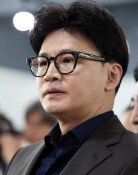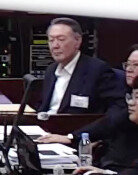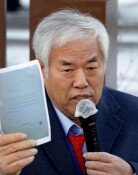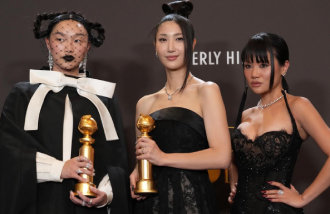Craze for designer labels fuels counterfeit goods market
Craze for designer labels fuels counterfeit goods market
Posted February. 05, 2013 06:47,
Thinking of the location, it doesnt seem to be a retail shop. I guess it could be a liaison office between suppliers and retailers. The address says it`s on the 10th floor.
A minivan on Jan. 31 pulled over in front of a building in Seouls posh district of Gangnam and four men got out. They were investigators from the Seoul branch of the Special Judicial Police Force on Trademark under the Korean Intellectual Property Office. They were about to raid the office of an online shopping mall selling fake designer handbags but gave a hollow smile. Theres no 10th floor in this building, a staff said.
The investigation was started thanks to a tip, but the address on the website was false.
○ Crackdown on counterfeit bags
Louis Vuitton, Chanel, Gucci, Prada, handbags, wallets, belts, watches...
The URL received from the informer opened a website of an online shopping mall displaying the words above. A one-on-one consultation window, phone number of the call center and the office address appeared on one side.
SA-class Louis Vuitton Vernis Brea handbags for 206,000 won (190 U.S. dollars), same day delivery. SA is an abbreviation for Special A, referring to a highly sophisticated fake hardly distinguishable from an original.
You shouldnt take that word seriously because sellers all say they sell SA products. They would never say the qualities of their products are any less than SA.
An investigator laughed while saying, No imitation can be exactly the same as the original or sophisticated enough to be distinguished by experts. A former police sergeant, he became an investigator for the intellectual property office by applying in 2011. In other countries, police or customs officers crack down on fake products, but Korea is the only country with an independent agency dedicated to cracking down on counterfeits.
The Special Judicial Police Force has 25 officers, including nine in Seoul, who indicted 302 people and confiscated 131,599 items last year. If the products were originals, they would have been worth more than 24 billion won (22 million dollars). Most of them were handbags, but outdoor apparel, shoes, accessories, eyewear, watches and wallets were found as well as drugs like Viagra, memory cards and daily necessities such as electric blankets.
The chief investigator said, There are people who even want to buy imitations for cheap products such as those whose originals would cost only about 50,000 won (46 dollars).
○ Evolving market for fake products
The start of the anti-counterfeit item police is considered embarrassing. After receiving complaints for many years about the large volume of fakes, which hardly matched the national prestige or the size of the Korean economy, the government granted judicial police power to the Korean Intellectual Property Office in September 2010. According to a website specializing in studies of the global black market, the imitation market in Korea was worth about 17 trillion won (16 billion dollars) as of last year, the world`s 10th biggest.
The sheer size of the black market reflects the lack of guilt held by many Koreans, including manufacturers, sellers and customers. More than a few informants used to buy imitations but decided to report them due to lower-than-expected quality of the products. Such customers knowingly purchased fakes.
Some show new catalogs of designer brands to sellers to get imitations of new products. In such cases, sellers get fake products in Seoul`s major shopping districts of Myeongdong or Dongdaemun and resell them to the customers. This practice makes it harder to crack down on those on the top of the pyramid of the imitation market.
○ Demand for fakes creates supply
Investigators say many imitation manufacturers make fakes just to make ends meet. With large companies taking a greater market share, they claim, craftsmen for handbags or shoes who have lost their jobs are tempted to make imitations to sell their products, and if Korean society had more respect for craftsmanship, such craftsmen would not have to break the law.
Authorities also say they sometimes feel overwhelmed by the endless reports and the sheer volume of confiscated fakes. As long as people want to have designer handbags regardless if they are fake, supply will always be there. One investigator said, When I didn`t know much, I wondered why we had to protect rich companies and crack down on poor people.
The chief investigator said, We believe that Koreans will purchase less expensive but good quality Korean products if they cannot get fakes. Koreans need to learn not to pursue designer products.
tesomiom@donga.com







